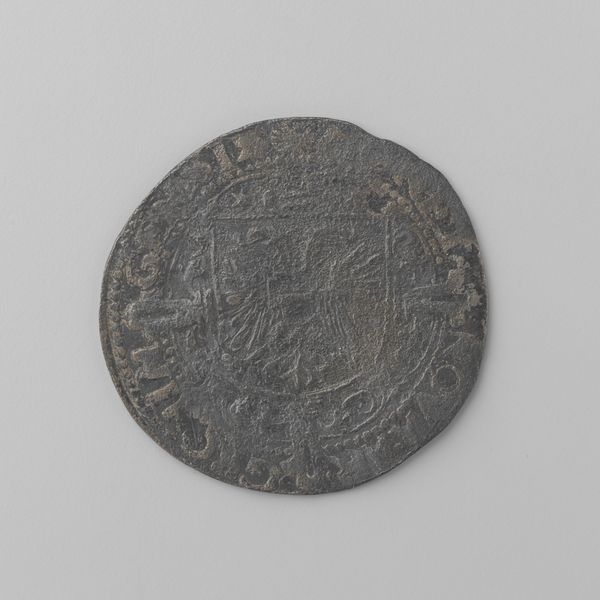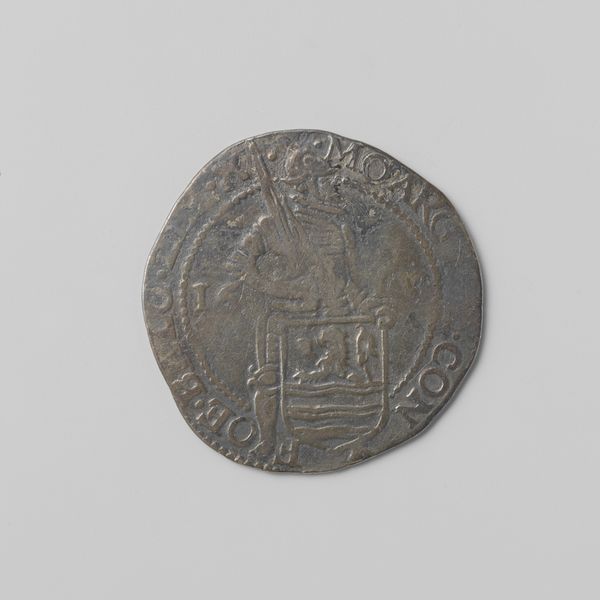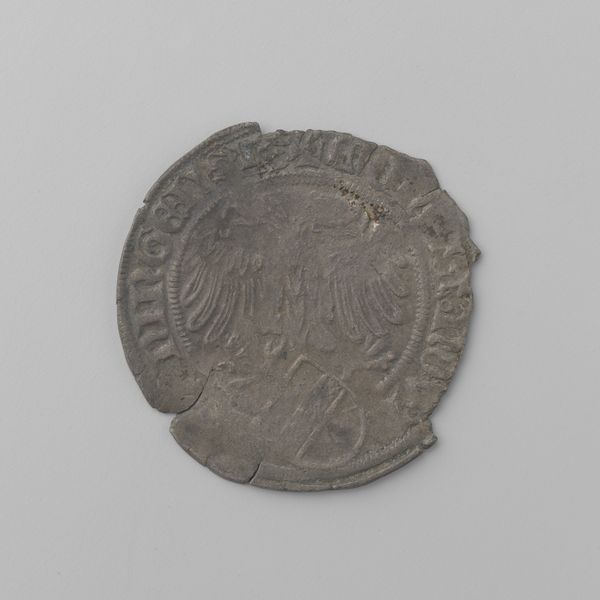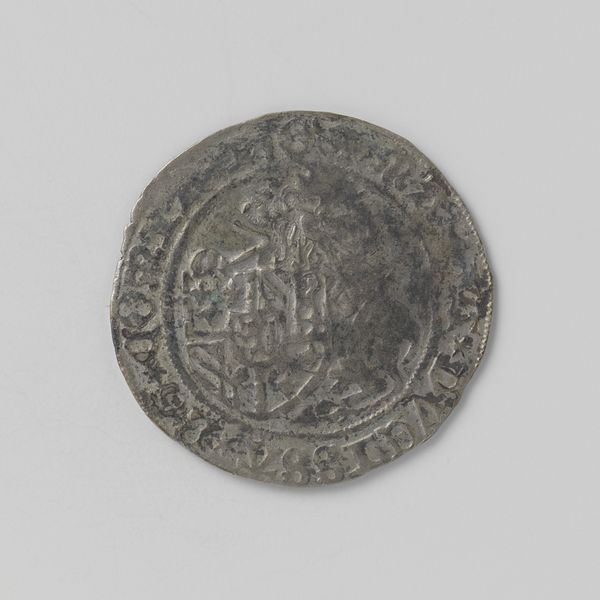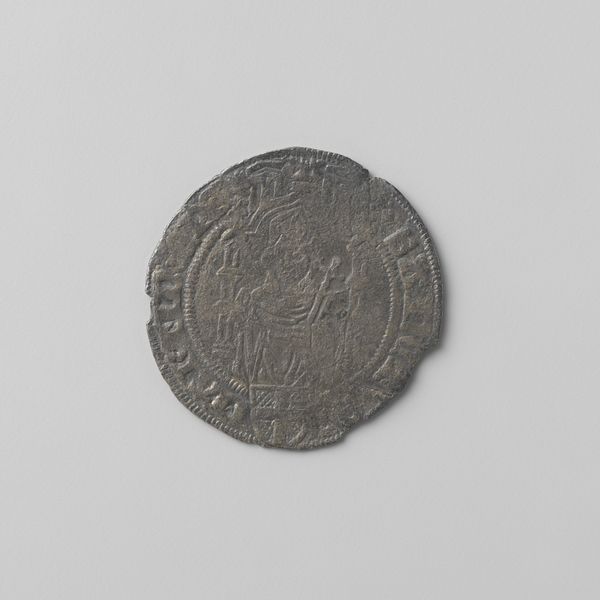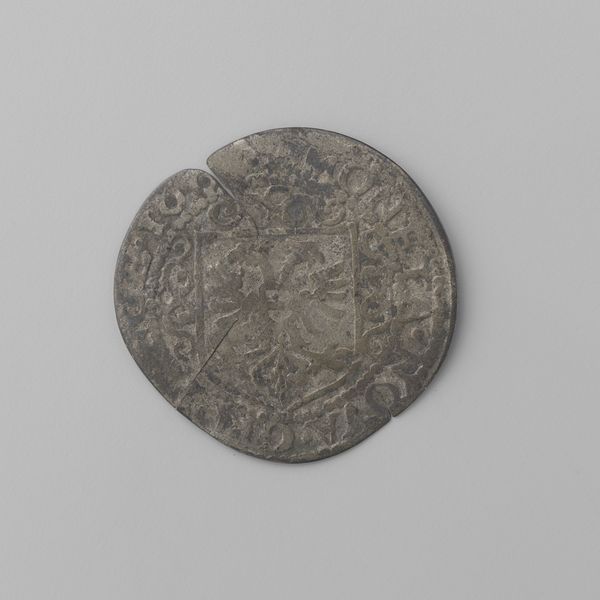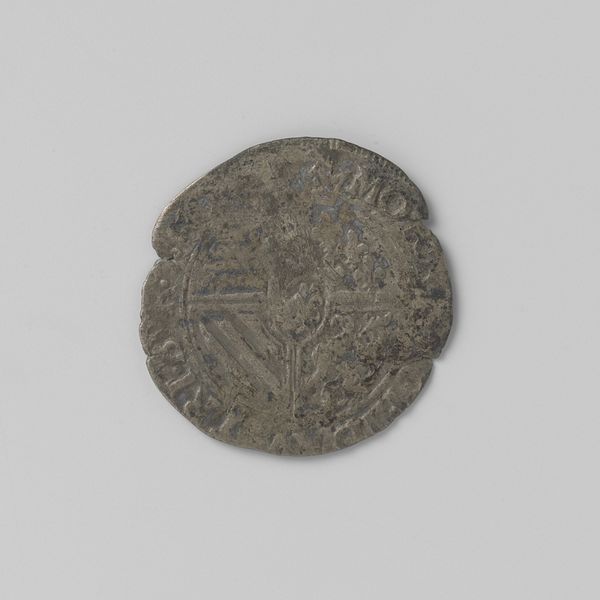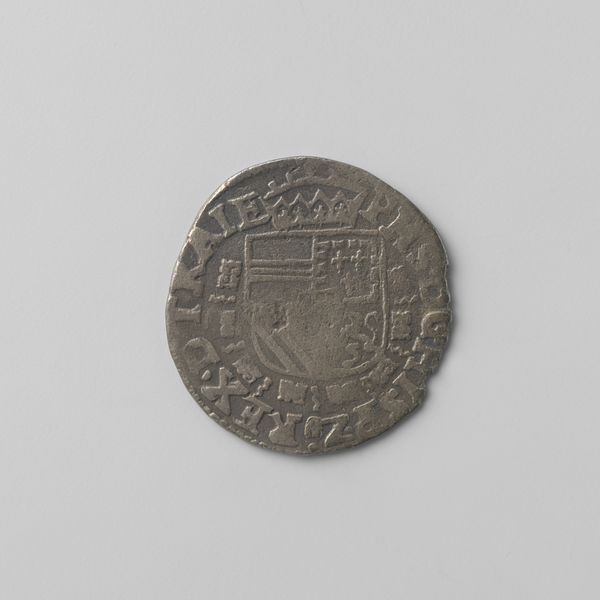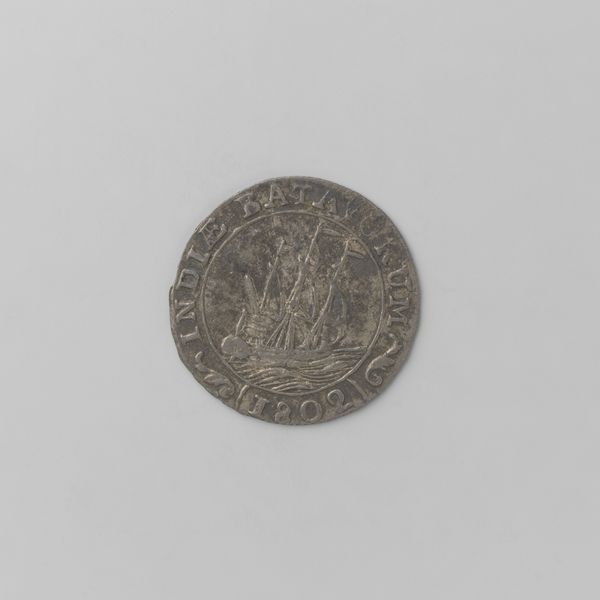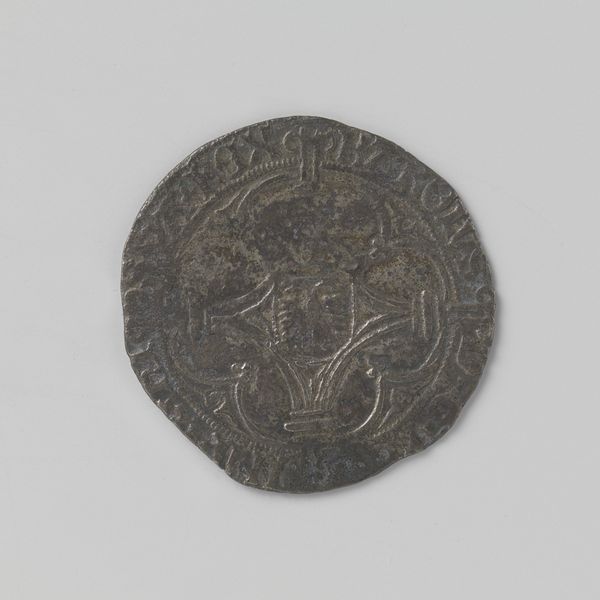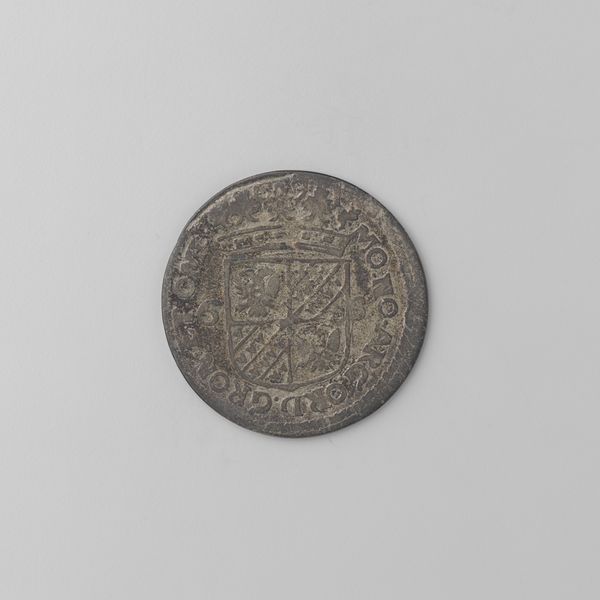
metal, relief
#
portrait
#
medieval
#
metal
#
relief
#
decorative-art
Dimensions: diameter 2.9 cm, weight 2.99 gr
Copyright: Rijks Museum: Open Domain
The Stad Groningen produced this coin in 1599. At first glance, the coin presents as a study in circularity: the coin’s edge, the concentric rings of text, and the central heraldic emblem all reinforce this shape. Yet, a closer look reveals the material’s resistance to perfect form. The worn texture and slight damage to the coin's edge introduce a certain irregularity. This interplay between intended design and material reality is a microcosm of the tensions inherent in currency itself. The coin aims to be a standardized, universally recognized token of value, yet its physical existence introduces variables. Consider how the heraldic imagery functions here. The eagle, a symbol of power and authority, is meticulously rendered. The surrounding text, though partially obscured by wear, speaks to the coin's origins and intended value. Thus, this small object encapsulates a complex interplay of form and meaning, inviting us to consider the relationship between symbolic representation and material existence.
Comments
No comments
Be the first to comment and join the conversation on the ultimate creative platform.
